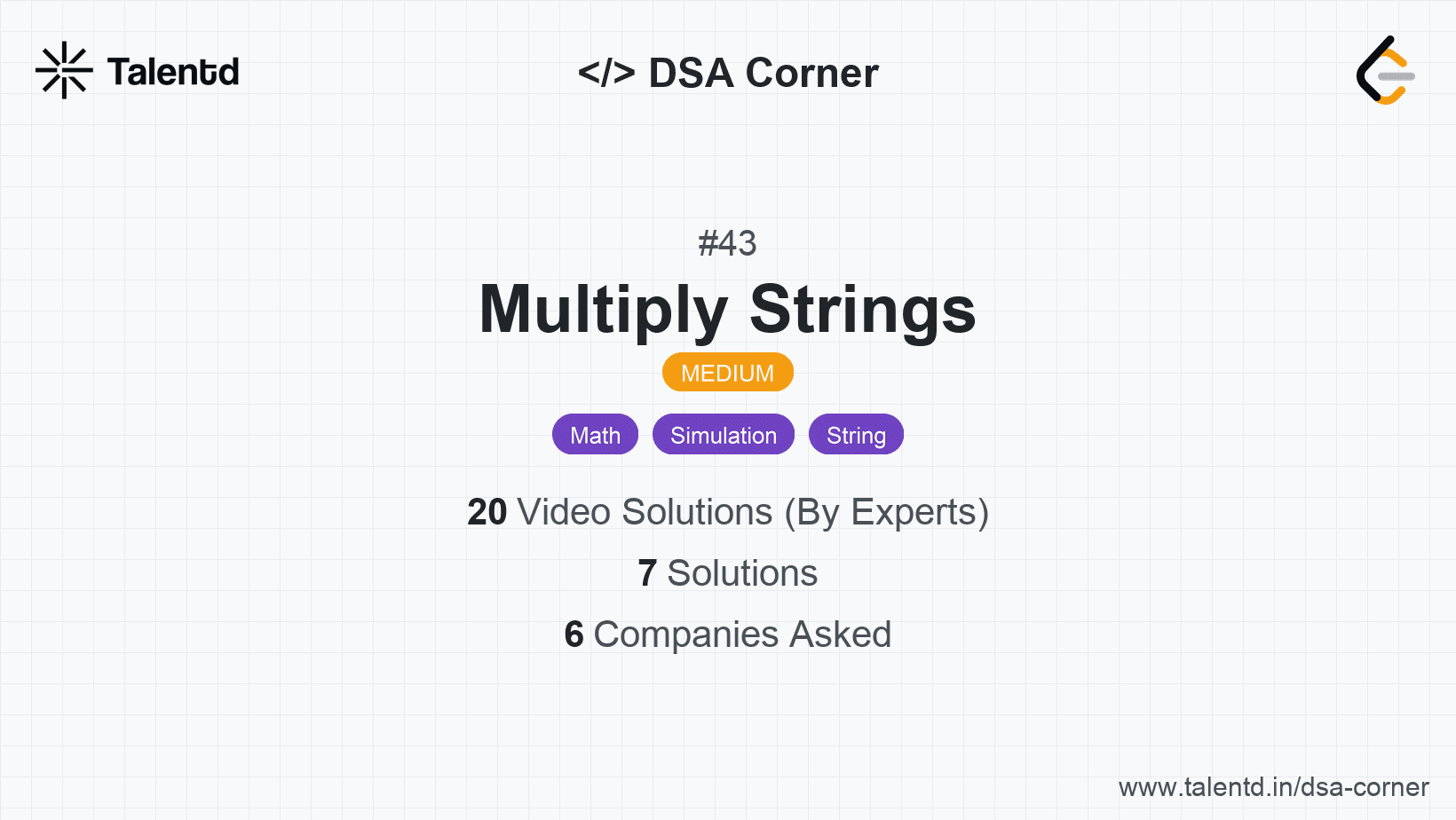
Sponsored
Sponsored
This approach mimics the multiplication process that is taught in schools. The idea is to multiply each digit of num1 with each digit of num2 and store the result in the corresponding position in an array. This intermediate result is then summed together to form the final product. We avoid using any built-in library functions for handling large numbers.
Time complexity: O(n * m), where n and m are the lengths of num1 and num2 respectively.
Space complexity: O(n + m) for the result array used to store intermediate results.
1function multiply(num1, num2) {
2 if (num1 === '0' || num2 === '0') return '0';
3
4 const len1 = num1.length, len2 = num2.length;
5 const result = new Array(len1 + len2).fill(0);
6
7 for (let i = len1 - 1; i >= 0; i--) {
8 for (let j = len2 - 1; j >= 0; j--) {
9 const mul = (num1[i] - '0') * (num2[j] - '0');
10 const sum = mul + result[i + j + 1];
11
12 result[i + j + 1] = sum % 10;
13 result[i + j] += Math.floor(sum / 10);
14 }
15 }
16
17 while (result[0] === 0) {
18 result.shift();
19 }
20
21 return result.join('');
22}In JavaScript, the solution builds on the same principles: an array manages intermediate multiplication results, and we iterate through both strings backwards to multiply digit by digit. We ensure any leading zeros from the result are removed before returning the final product.
This approach leverages string manipulation and direct indexing to carefully manage carries and keep track of the multiplication progression similarly to approach one. The ultimate goal is to achieve better space optimization by minimizing the auxiliary storage.
Time complexity: O(n * m), comparable to previous method.
Space complexity: O(n + m) but implemented to handle carry more elegantly.
1def multiply_numbers(num1: str, num2: str
Optimized through direct multiplication with preexisting carries within the innermost loop, this approach does not drastically alter the foundational logics compared to approach one, yet reduces redundancy in carry handling.